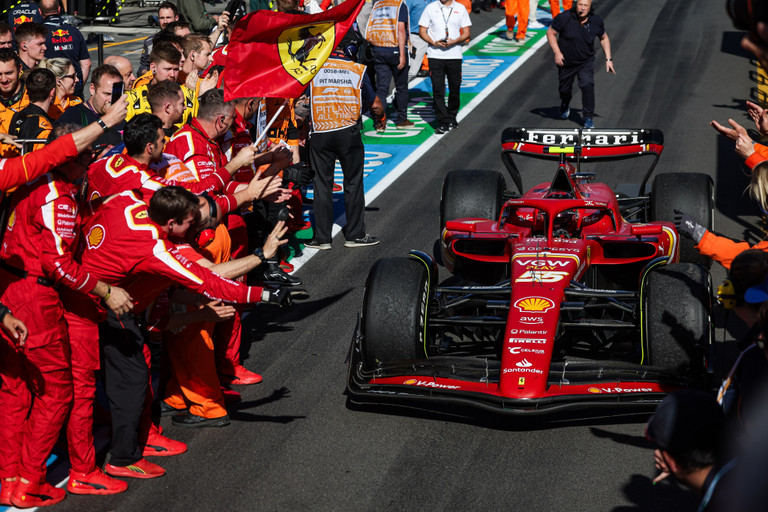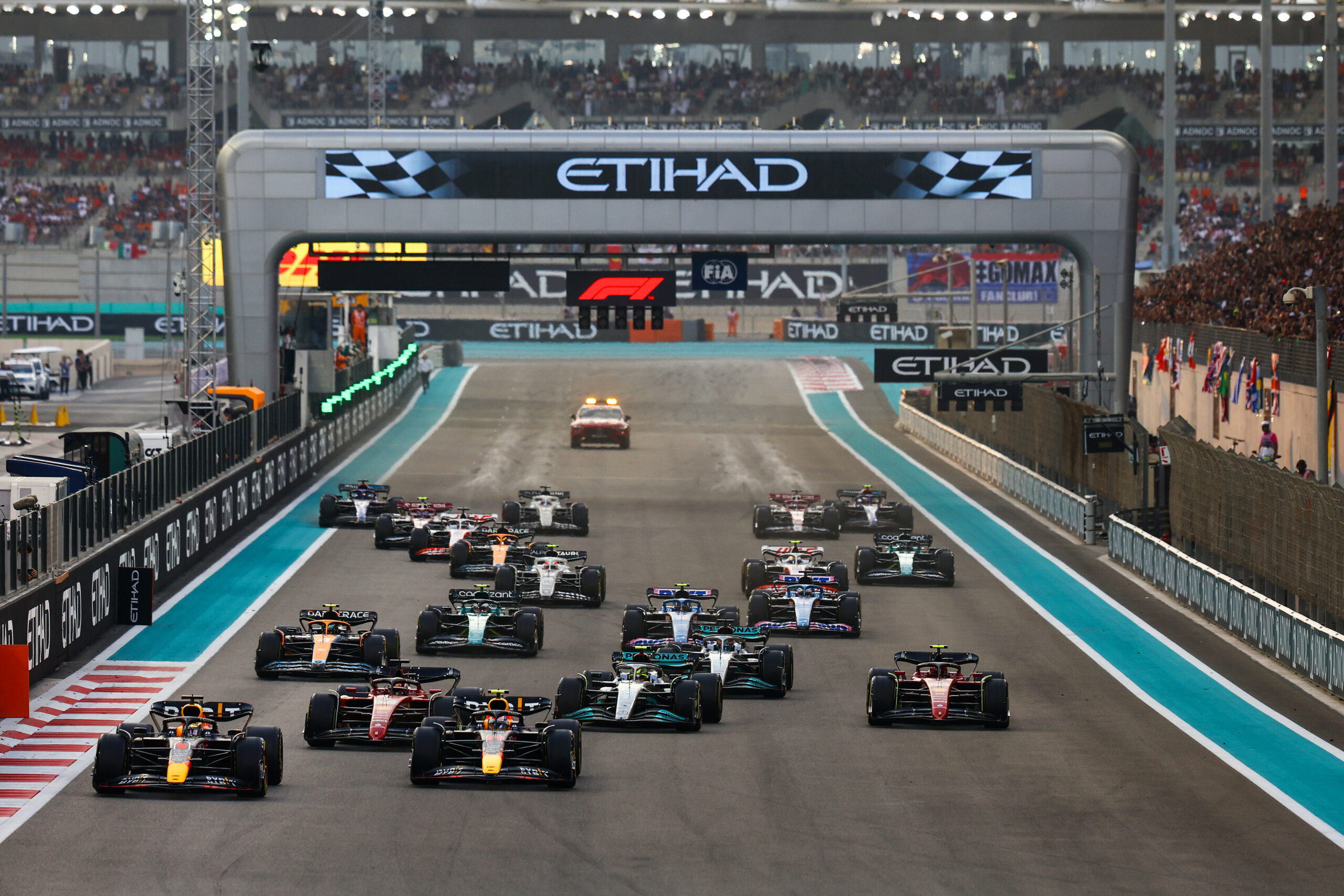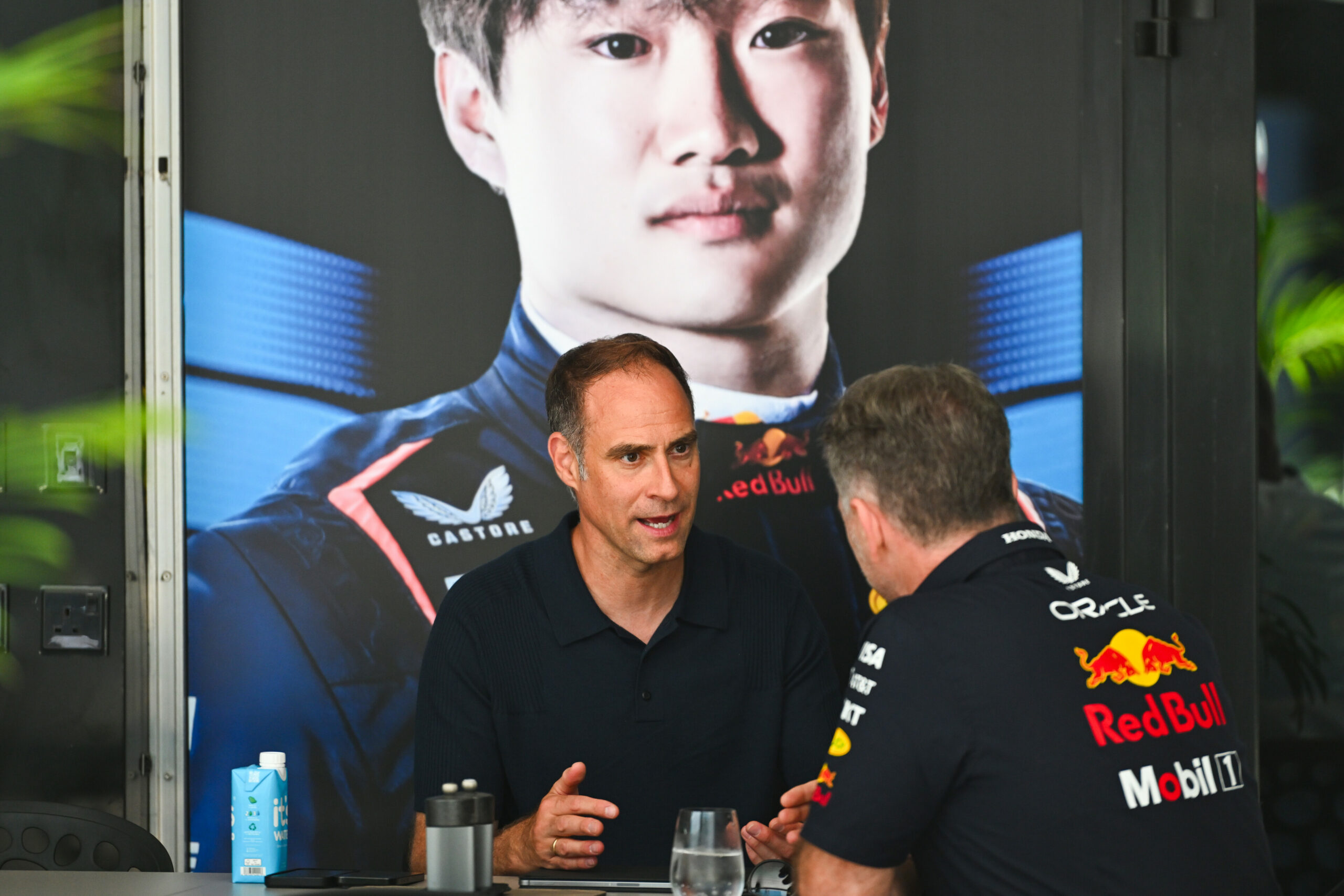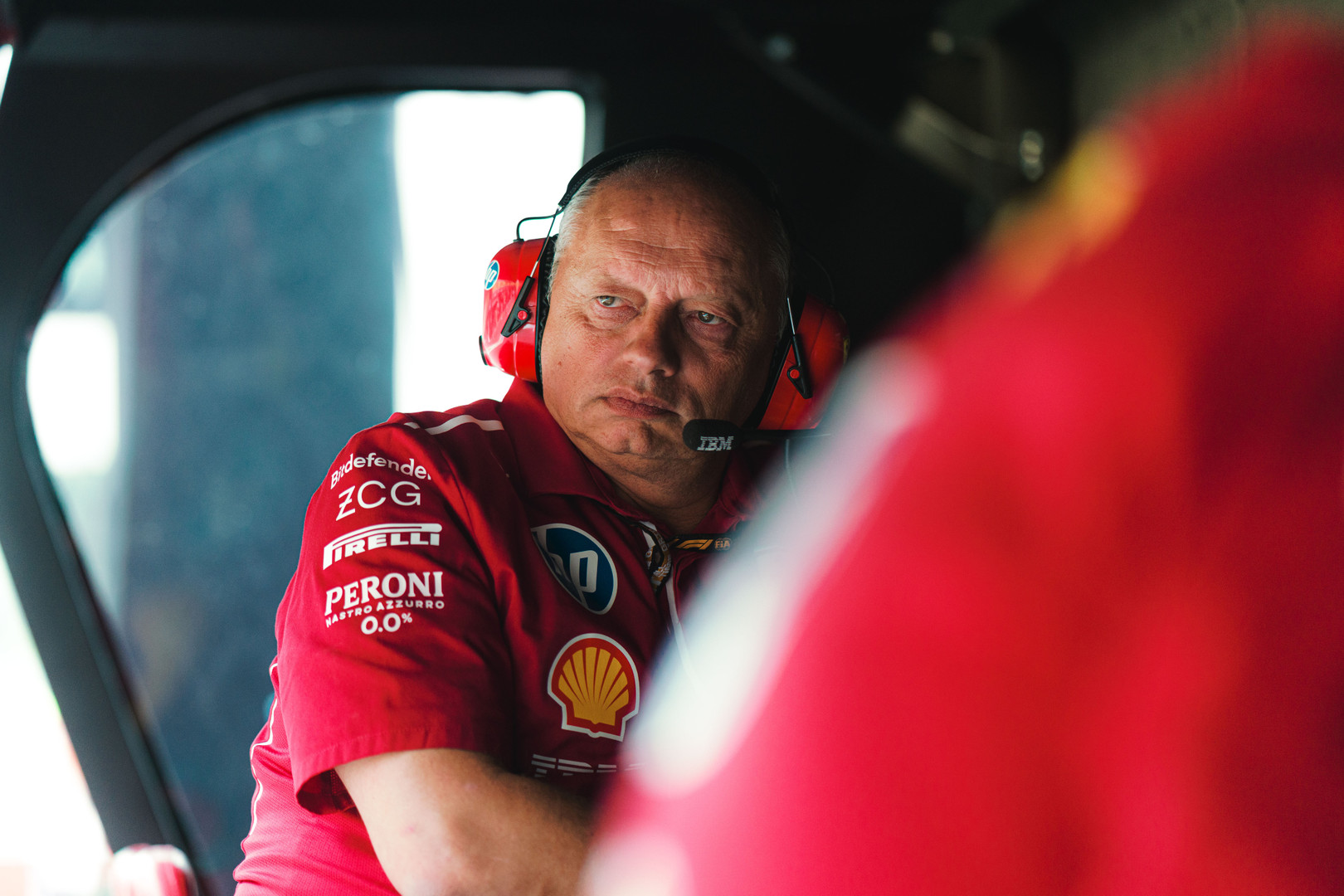Carlos Sainz’s outstanding victory at the Australian Grand Prix following an appendix removal 16 days before was an incredible achievement. However, the hyperbole has gone too far.
Round 3 of the 2024 Formula One World Championship marked a significant moment as Max Verstappen’s early DNF due to a right rear brake issue opened the door for Carlos Sainz to take a third career victory — it was also the second time in 6 months that he brought a long streak of Verstappen wins to a halt.
On qualifying day, the Dutchman beat his former teammate to pole as the Spaniard made a costly mistake in the very quick turns 9 and 10 section, losing around 0.4s of a second. Had Sainz not done so, pole position was his for the taking.
After taking pole and winning the Singapore Grand Prix, Australia was the first time since that event that he outqualified Leclerc — the Monegasque driver had gone on an incredible 8-0 run following that disappointing weekend at Marina Bay. The 26-year-old also outscored his teammate by 83 points to 58 over the final 7 rounds last year to beat Sainz in the standings by 6 points.
The Spaniard drove an excellent race in Melborune and rightly has been lauded for it considering what he had been through with his surgery. However, if you analyse the Australian Grand Prix really closely, Sainz was on average only half a tenth quicker than Leclerc on the day.
This was not a Michael Schumacher, Lewis Hamilton or Max Verstappen style victory where he crushed his teammate. In fact, Leclerc was slightly quicker in the last stint and set fastest lap despite Sainz having 7-lap younger tyres, in a Grand Prix where graining and degradation played a big factor. The gap was a little bit over 5s following his stop, it had been reduced to under 4s before the Virtual Safety Car following George Russell’s big crash.
If we rewind the clock to 4 rounds ago, Sainz had a terrible weekend at the 2023 Abu Dhabi Grand Prix. He crashed in FP1, got knocked out in Q1 and had no pace in the race either. His underwhelming weekend meant Mercedes took P2 in the Constructors’ Championship.
In Bahrain last month, Leclerc would have likely finished ahead of the Spaniard had he not suffered with extreme braking issues, a serious problem very few outlets properly covered.
To be a truly elite driver and mentioned in that category, you need to deliver these big performances every single week over the course of many years. For example, Lewis Hamilton and Fernando Alonso have continuously done it through their many years in the sport. Max Verstappen has been doing it in recent years as he matured and became a complete driver that is unbelievably good.
Sainz is in his tenth campaign in F1 and has not shown that consistent level to be mentioned in the same breath as the three World Champions. Teammate and F1’s best qualifier Charles Leclerc has also proven to be quicker in their time together as teammates as almost all the key head-to-head stats show.
In 2022, Leclerc would have put over 100 points into Sainz had Ferrari’s strategy team not destroyed his victory races at Monaco, Silverstone and Hungary. None of those were on him or his alleged lack of strategical nous. Unreliability lost him a certain victory in Spain and a potential one in Azerbaijan. The FIA failing to follow their own rulebook also cost him a P1 in Singapore.
Only at the French Grand Prix when he was in contention for the win and crashed out could you point the blame at Leclerc’s door.
Ferrari had a car capable of challenging for the championship in the first part of 2022 — and it was the Monegasque driver who stepped up to the plate. Leclerc had a clear pace advantage over the struggling Spaniard. Sainz’s driving style and his limitations got exposed during that period.
Sainz is a very talented racing driver — but is he really at the level of a World Champion one? There’s a reason Max Verstappen got the nod to take Kvyat’s Red Bull seat in early 2016; there’s also a reason Scuderia Ferrari kept Charles Leclerc over him to partner Lewis Hamilton for 2025. Each team analyses every driver and the data does not lie.
To question the signing of Lewis Hamilton after a tricky start to 2024 — in a car that is difficult to drive — is far too reactionary. His extraordinary level of performance over the previous 16 years means the seven-time World Champion has a lot of credit in the bank. The Brit has not shown signs of a massive decline, akin to a Daniel Ricciardo.
A stick people like to beat Charles Leclerc with is that he falls away in races. But when you take pole positions in a car that has no right to be P1, losing places and dropping back into a natural position during the race is inevitable. Baku last year is a prime example of that. He maximised both qualifying (P1) and the race (P3). That was another weekend where Sainz was a long way behind his teammate.
Leclerc’s also well able to manage the strategy and be adaptable as he showed in Abu Dhabi last year when letting Perez through to try and get P2 in the Constructors’ Championship — what happened on multiple occasions in 2022 was outside his control.
Carlos Sainz would be perfect for an upper midfield team on the rise for next year and beyond. He’ll consistently bag a team points, but he ultimately misses that last little bit to be considered in the elite category. At 29, everyone in the paddock knows his strengths and weaknesses by now. He has reached his peak.
A number of media outlets need to remember that one swallow doesn’t make a summer.
It’s not the first time…
The lessons of 2023 do not seem to have been learned. Sergio Perez won in Saudi Arabia and Baku as his shared the first four race wins with his teammate — and there was talk of a genuine title race between Verstappen and the Mexican driver.
At the next race in Miami, Verstappen won from 9th on the grid after Perez started on pole. The Dutchman went on to win 10 in succession. He took the championship by a whopping 290 points from his stablemate.
In reality, nobody should have been surprised at how the three-time World Champion blew Perez away — it looked inevitable after Bahrain. He will go down as one of the greatest drivers in F1 history. The 26-year-old is simply a better driver as 2021 and 2022 had already shown.
Recency bias is a problem in the sporting world. It’s also becoming a greater issue in F1 as some media outlets go way over the top with praise following one strong performance. Long-term performance analysis is the key to understanding things.





